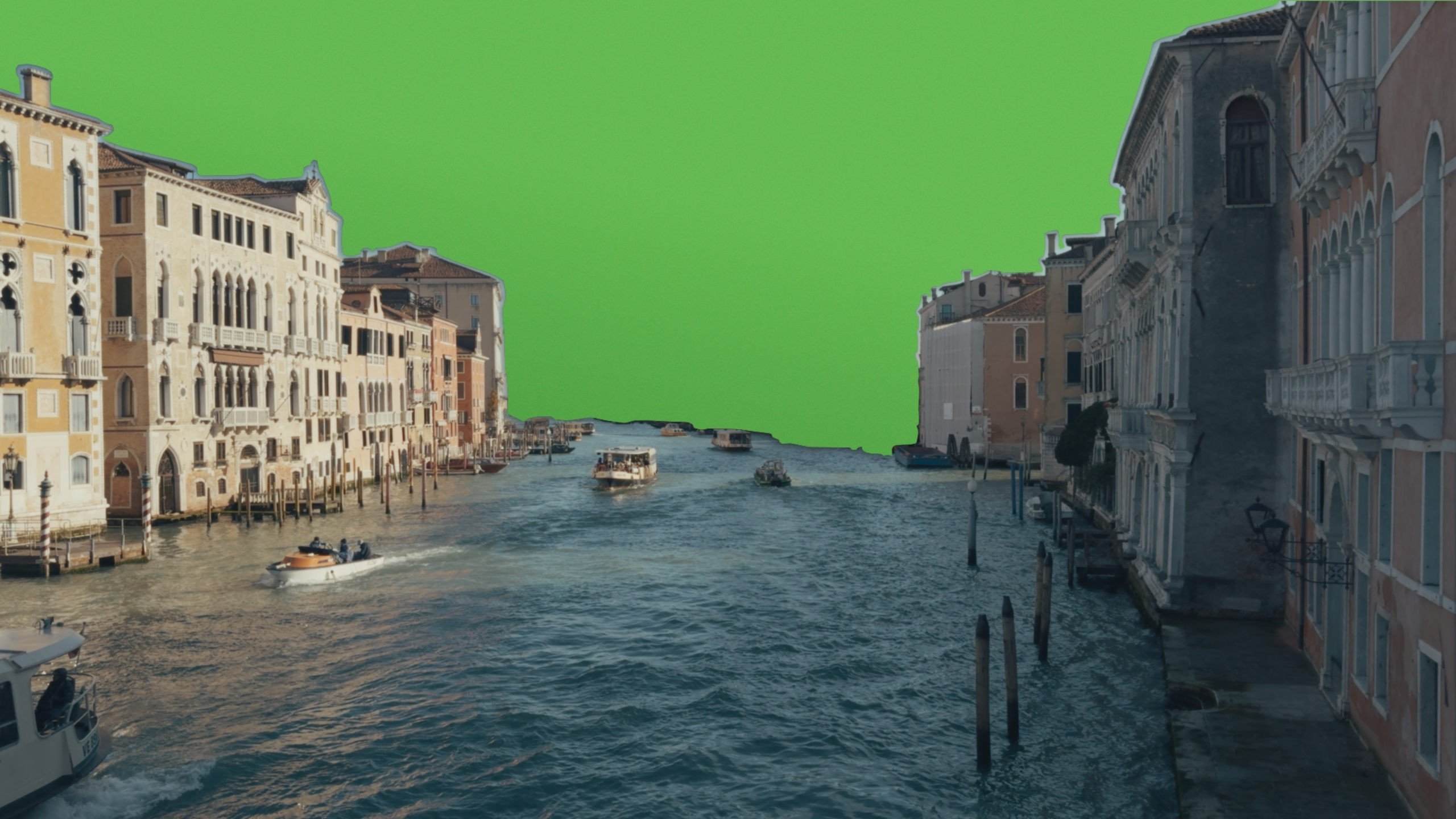The film benefits from great narrative freedom, it puts on the “I” through the body of an actress, the voice of a narrator and the words of quotations crossing each other on the screen. What was the creative journey of this potential autofiction like?
I wanted a “collage” film associating an ultra personal narrative to History by blending voices, even if it meant dissociating their bodies. Choosing my friend Jeanne Alechinsky to play the “moretta” felt obvious, as she is a dancer and a choreographer. I knew she would know how to bring her character to life even though her development is mostly hidden, all throughout the movie. By giving her her voice, the narrator, Anne Steffens, bypasses the self-centered aspect of the film, and creates a puzzle effect accentuating the universality of her quest. As for the quotations, they refer to my need to gather information before traveling, to search for connection. In Venice, everything I would read inspired me, this city of “desire” influenced my own relation to desire.
The city of Venice is the backdrop of the film, where desires and doubts are projected, but it it also the silent sparring partner of this trajectory, with its stories and its myths. Can you tell us in what consisted your work with the city, its geography, but also its romantic stereotypes?
Venice is a true tourist city, it thrives from its attractiveness as much as it suffers from it. Its fascinating story is also full of paradox. This stunning setting loaded with History(ies) guides the main character in her increasingly unbearable search for freedom. The Moretta’s wander follows a plausible itinerary of a tourist getting tired bridge after bridge, running after her phone battery and her compass in order not to get lost. She walks through the Rialto, San Marco and Castello, sails the Grande Canal in a gondola, until the film’s turning point: the San Michele cemetery.
The title, Le Fond vert [“green background” or “green screen”], alludes to the role of Venice as backdrop for the story, but also the image manipulation device used several times. This fusion between the city and the set resonates with the Venetian pop fantasy while being is osmosis with the creative impetus of the film. Which ideas and suggestions guided you through the narrative and visual composition?
I like working with the content/form correlation, so the narrative can “take off”. The Fond vert is the lagoon, as well as an obvious reference to the virtual device. This sheet we draw behind the character is a basic special effect also perfectly within the very light budget of the film. We shot the film as a very small team In Venice: Julie Conte with the camera, Jeanne playing, and me recording sound with zoom. The title is also an homage to Eric Rohmer’s The Green Ray.
Interview by Margot Mecca
